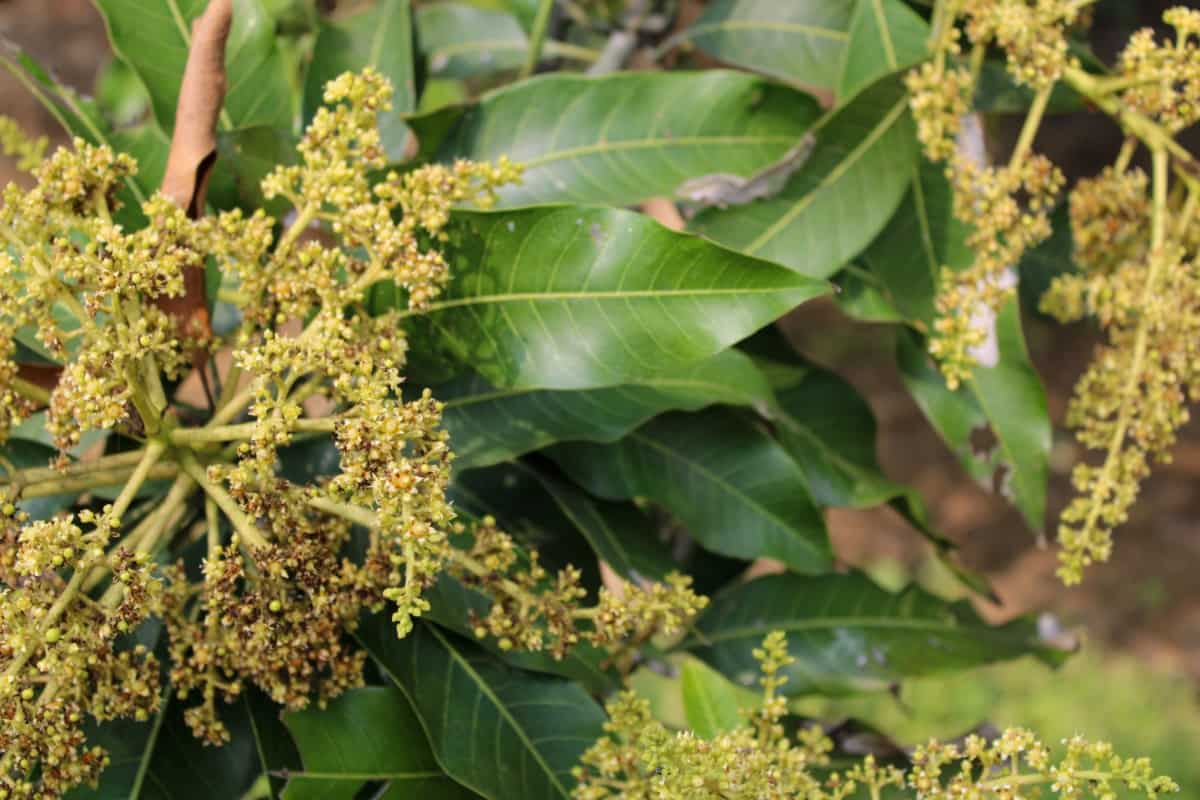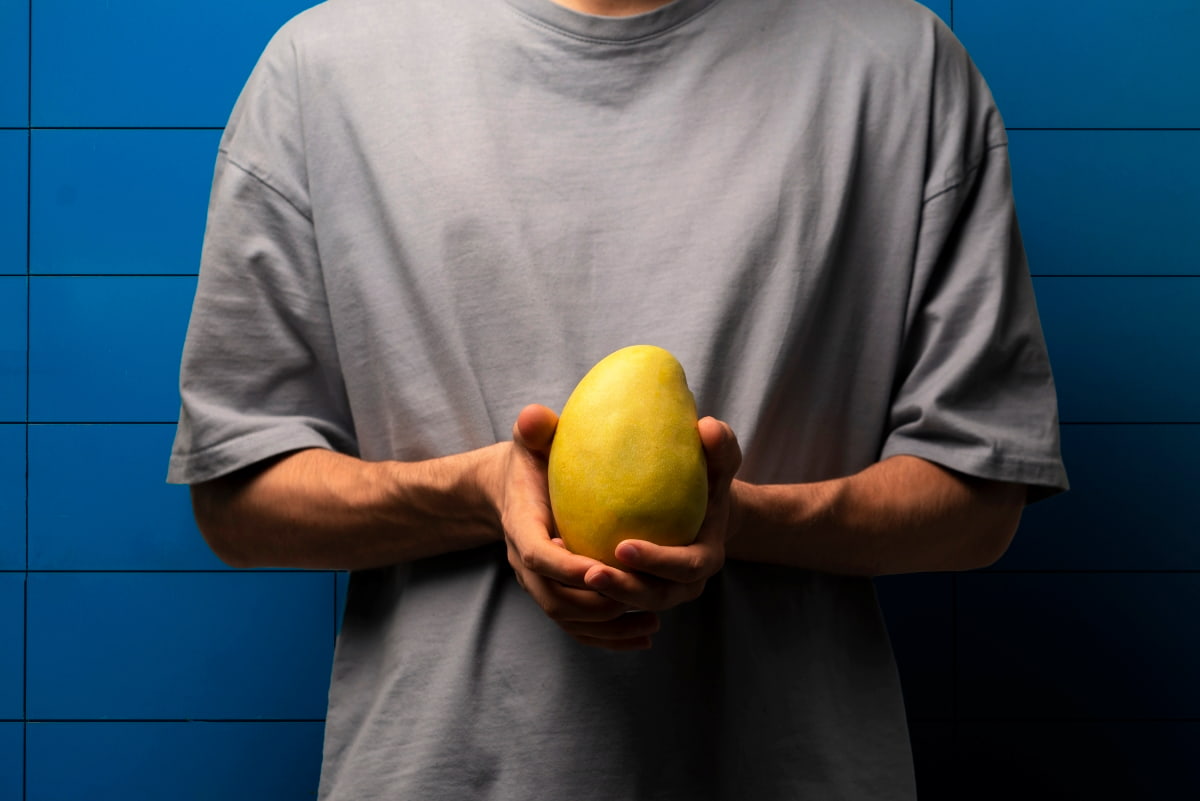Himayat Mango farming is a cultivation practice focused on the Himayat variety of mangoes. Himayat mangoes are renowned for their large size, delicious taste, and aromatic fragrance. This type of farming involves cultivating, caring for, and maintaining Himayat mango trees, ensuring optimal growing conditions, pest control, and harvesting techniques. Himayat mango farming offers farmers an opportunity to produce a premium mango variety with high market demand.

Himayat Mango Farming
What is Himayat Mango Farming?
Himayat Mango farming is a specialized agricultural practice centered around cultivating the Himayat variety of mangoes. Originating from India, Himayat mangoes are known for their great size, weighing up to 1.5 kg each. The fruit is characterized by its rich flavor and pleasant aroma. Himayat Mango farming involves careful management of trees, including optimal growing conditions, pest control, and strategic harvesting techniques.
Special Features of Himayat Mango
- Grown in Telangana, Andhra Pradesh, and Tamil Nadu.
- Known as Imam Pasand or Himayat mango.
- Unique characteristics: sweet aroma, abundantly juicy.
- The thin outer skin, delicate seed, and much pulp inside.
- Highly sought-after mango variety.
- Cultivated with care and expertise.
Pits Preparation for Himayat Mango
- Pits preparation is a crucial step in Himayat mango farming.
- Select a suitable site with well-drained soil and ample sunlight.
- Dig pits of recommended dimensions (usually 1 meter wide and 1 meter deep).
- Remove any debris, rocks, or weeds from the pit.
- Mix organic manure or compost with the excavated soil.
- Fill the pits with the prepared soil mixture, leaving a slight depression in the center.
- Allow the pit to settle for a few weeks before planting the Himayat mango sapling.
Plantation of Himayat Mango Trees
- Selection of Healthy Saplings: In Himayat mango farming, choose healthy ones with no signs of disease or damage. Look for well-developed root systems and strong stems. The leaves should be green, vibrant, and free from any blemishes. Ensure the saplings are of the recommended age and size for transplanting.
- Number of Plants Per Acre: In high-density mango farming, the number of plants per acre is typically around 100, whereas traditional farming methods generally have approximately 40 plants per acre.
- Age of the Plant when Planted: In Himayat mango farming, it is recommended to plant saplings around 1-2 years old. This age ensures the plant has developed a strong root system and can adapt well to the new environment. Younger saplings have a higher chance of survival and establishment in the field.
- Support and Stacking of Plants: In Himayat mango farming, providing support and stacking for the plants is important. This helps maintain upright growth, prevent breakage, and support heavy fruit loads, ensuring the overall health and productivity of the mango trees.
Drip Irrigation/ Water Management in Himayat Mango
- Drip irrigation is a recommended water management practice in Himayat mango farming.
- Install a drip irrigation system with emitters placed near each mango tree.
- This system directly provides a controlled and efficient water supply to the plant roots.
- It reduces water wastage and ensures optimal water uptake by the trees.
- Regularly monitor soil moisture levels to adjust irrigation schedules.
- Proper water management promotes healthy growth, fruit development, and water conservation in Himayat mango farming.
In case you missed it: Totapuri Mango Farming: A Comprehensive Guide to Planting, Pruning, Care, and Harvest

Compost/Fertilizers Application Stages
- Pre-Planting: Incorporate well-decomposed compost or organic matter into the soil during pit preparation.
- First Year: Apply a balanced organic or slow-release fertilizer during the early stages of growth.
- Second Year onwards: Apply a balanced NPK fertilizer with micronutrients, split into multiple applications during the growing season.
- Flowering and Fruit Development: Provide a potassium-rich fertilizer to promote Flowering and fruit set.
- Post-Harvest: Apply compost or organic matter to replenish soil nutrients.
Pruning Stages/Season for Himayat Mango
- Formative Pruning: Perform initial pruning during the first 2-3 years to establish a strong framework of branches.
- Winter Pruning: Conduct major pruning during the dormant season (winter) to remove dead, diseased, or overcrowded branches.
- Post-Harvest Pruning: Carry out light pruning after the fruiting season to remove unproductive branches and maintain tree shape.
- Renewal Pruning: Every 5-7 years, rejuvenate the tree by pruning older branches to promote new growth and maintain tree vigor.
Flowering Stages for Himayat Mango
- Time of Flowering: The Himayat mango is also called the Imam Pasand mango. It takes approximately 3 to 4 years to grow and blossom to produce the fruits.
- Factors affecting Flowering: Climate conditions, particularly temperature, and humidity.Availability of water for irrigation.Nutrient levels in the soil.Pruning practices.Pest and disease management.Pollination by insects.Age and health of the mango tree.
- Importance of Flowering: Flowering is crucial in Himayat mango farming as it determines the fruit set and subsequent yield. Good Flowering ensures pollination, fruit development, and a bountiful harvest, which is essential for successful Himayat mango cultivation.
- Pollination Techniques: In Himayat mango farming, natural pollination by insects and wind is the primary technique. However, manual pollination can be done by transferring pollen from the male flower part to the female flower’s stigma using a small brush or gently shaking the branches to transfer pollen.
Pests and Diseases Management in Himayat Mango
Himayat mangoes can be susceptible to various pests and diseases. Some common problems include mango hoppers, fruit flies, and mango mealybugs, while diseases like anthracnose, powdery mildew, and mango malformation can affect the trees. Integrated pest management (IPM) practices are recommended to manage these pests and diseases. This includes cultural, biological, and chemical control methods. Culturally, maintaining proper orchard hygiene, pruning to improve air circulation, and removing infected plant material is essential.
Biological control involves using beneficial insects like ladybugs and parasitic wasps to control pest populations. Chemical control involves judiciously using approved pesticides when necessary, adhering to safety guidelines, and considering environmental impact. Regular orchard monitoring for early detection and timely intervention is crucial for effective pest and disease management in Himayat mango farming.
Harvesting Time and Yield of Himayat Mango
Himayat mangoes typically require 2 to 3 months to reach maturity, with the ideal harvest period falling between mid-March and June 1. The yield of Himayat mangoes varies based on factors like tree age, soil type, weather conditions, and care provided. On average, a Himayat mango tree can produce a yield ranging from 100 to 200 kg per tree.
In case you missed it: How to Grow Mangoes in a Greenhouse: A Step-By-Step Guide for Seed to Harvest

Conclusion
Himayat mango farming presents a lucrative opportunity for farmers due to the exceptional qualities of this variety. With its large size, sweet aroma, and juicy pulp, Himayat mangoes command high market demand. Successful cultivation requires proper pit preparation, selection of healthy saplings, appropriate water management, fertilizer application, and timely pruning. Additionally, effective pest and disease management strategies are crucial.
- Feed Your Flock for Less: Top 10 Tips to Save on Chicken Feed
- Ultimate Guide to Ossabaw Island Hog: Breeding, Raising, Diet, and Care
- Hatching Answers: The Top 10 Reasons Your Chickens Aren’t Laying Eggs
- Eggs and Economics: Breaking Down the Cost of Raising Backyard Chickens
- Defend Your Greens: Proven Methods to Keep Iguanas Out of Your Garden
- Ultimate Guide to Cinnamon Queen Chicken: A Comprehensive Guide for Beginners
- Ultimate Guide to California Tan Chicken: Breeding, Raising, Diet, Egg-Production and Care
- Ultimate Guide to Marsh Daisy Chicken: Breeding, Raising, Diet, and Care
- 10 Types of Chicken Farming Businesses You Can Start for Profits